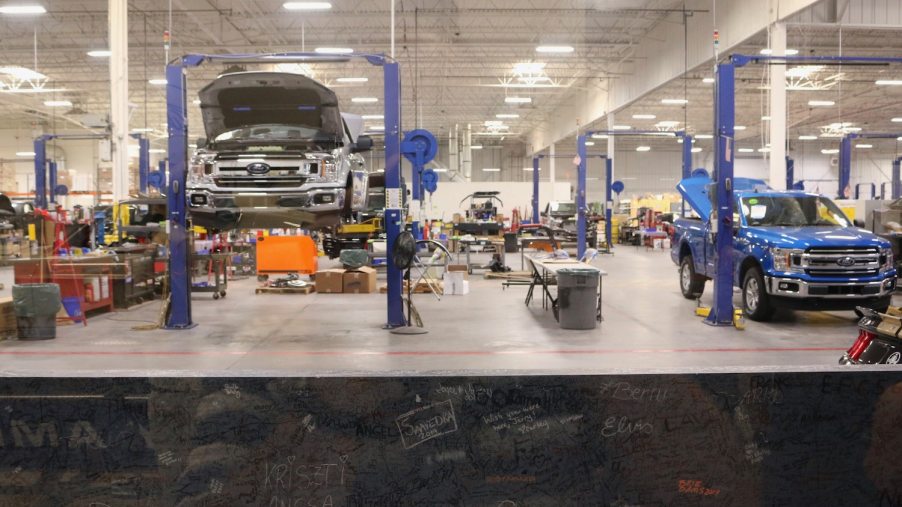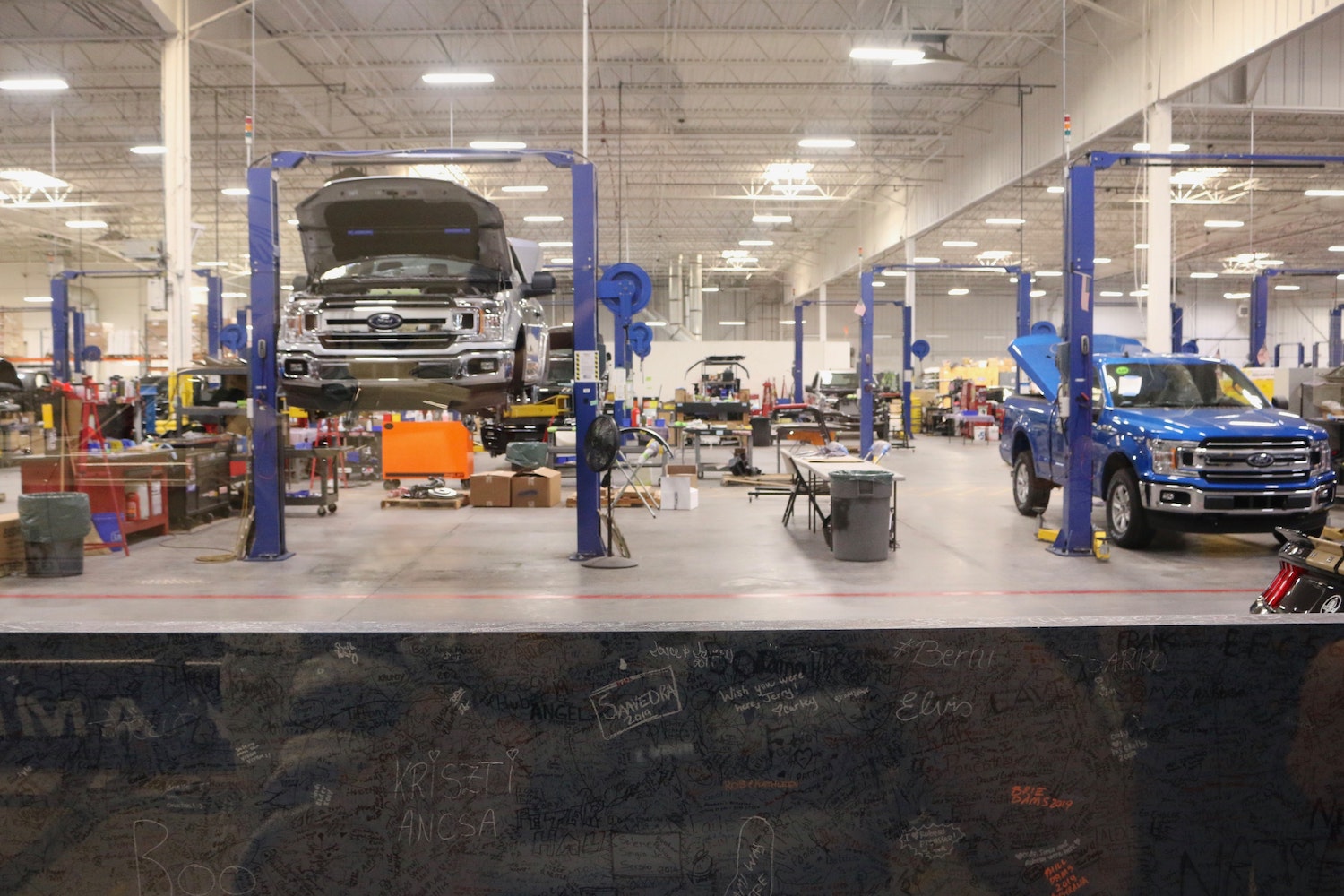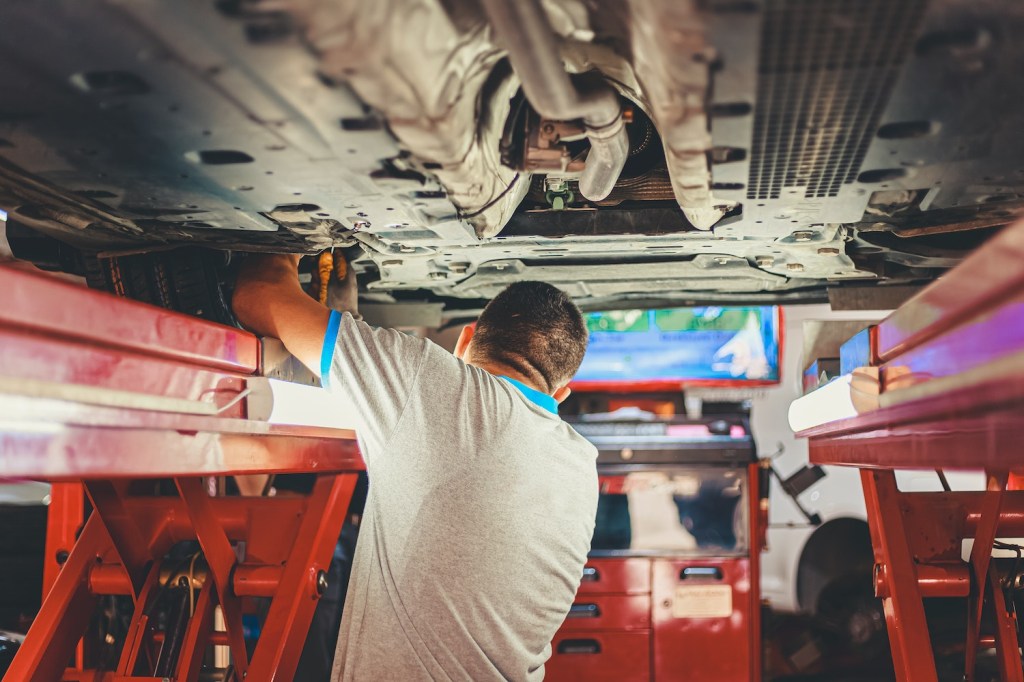
Why You Should Say No to the Dealership Undercoat After You Buy a New Truck
If you live in the road-salt-belt, you know trucks can rust quickly. Many dealerships offer an undercoating called “corrosion protection.” But according to Consumer Reports, you should say no to this add-on. This is because automakers build new trucks with advanced corrosion protection–they don’t need additional undercoating.
How much does it cost to undercoat a car?
Corrosion resistance/rustproofing/undercoating options range from liquid oil undercoatings to hard rubberized undercoatings. They are all designed to keep your car from rusting. While many private garages charge $100-$300 for undercoating, dealerships may charge $800 or more.

Here are the major types of corrosion resistance undercoatings, designed to prevent vehicle rust, according to The Drive:
- Wax/Paraffin Undercoating: This cheap option makes a waterproof seal and does a good job filling cracks and seams. But Wax/Paraffin does a poor job sticking to metal so you’ll need to reapply soon–sometimes in months.
- Polyurethane Undercoating: The only real downside of this corrosion resistance treatment is that it requires time to apply because you must prep the vehicle first. You must clean all the metal, then apply something called an etching primer so the coat can bond. This time drives up the application cost.
- Rubberized Undercoating: This undercoating will stick to multiple surfaces, and is safe to use on body panels such as quarter panels and wheel wells. It dries into a soft, rubbery finish that even protects your vehicle from gravel. But it’s expensive and mechanics must remove parts of it to work on your car.
- Asphalt-Based Undercoating: This undercoating is a heavy-duty rust protection mostly used on heavy-duty equipment, or some large RVs.
Hear from one mechanic with major concerns about rubberized undercoating sprays in the video below:
Is it worth getting an undercoating?
According to Consumer Reports, you shouldn’t bother paying for corrosion resistance undercoating on a brand new car. This is because new cars are built with rustproofing and corrosion resistance techniques. Used cars are a different story.

One major benefit of adding corrosion resistance while manufacturing a vehicle is that you can apply it before the paint. Many automakers spray the body panels of new cars with corrosion-resistant chemicals before painting them.
Toyota uses PVC sealant in panel joints and seams to leave no extra room for moisture and road salt to accumulate. This automaker then sprays the underside of the body in a rubberized “stone guard” sealant. Toyota also gives crevices and seams extra treatment by spraying them with wax.
You may have also noticed some automakers swapping to plastic fenders, fender wells, and lower panels. This is because your tires kick up stones that strike your fenders. If these stones strike a metal fender they’ll chip the paint off and begin the rusting process. But they’ll only nick rust-proof plastic.
Learn more about Toyota’s rust protection manufacturing process in the video below:
Is undercoating your vehicle a bad idea?
Undercoating manufacturers claim none of their treatments will damage your car–but they may damage your wallet. Adding corrosion resistance to a brand new car is unnecessary. But a used car that’s lost some of its original rustproofing might be a good candidate for undercoating.
Want to see how technicians undercoat a vehicle? Check out the video below:



